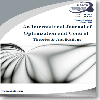The effects of LT-SN on energy dissipation and lifetime in wireless sensor networks
The effects of LT-SN on energy dissipation and lifetime in wireless sensor networks
___
- [1]Yildiz,H.U., Bicakci,K., Tavli,B., Gultekin,H., İncebacak.D.,"Maximizing wireless sensor network lifetime by communication/computation energy optimization of non-repudiation security service: Node level versus network level strategies",Ad Hoc Networks,Vol 37No. 2, pp.301-323(2016).
- [2]Weijie,L., Donglin,B.,"Energy-efficient distributed lifetime optimizing scheme for wireless sensor networks",Transactions of Tianjin University, Vol 22 No.1, pp.11-18(2016).
- [3]Kashi,S.S., Sharifi,M.,"Connectivity weakness impacts on coordination in wireless sensor and actornetworks",Comm. Surveys & Tutorials,Vol 15 No.1, pp. 145-166(2013).
- [4]Jaquez,J., Valencia,D., Balakrishnan,M., Johnson E.E., Huang,H.,"Implementation of TEAN-sleep for wireless sensor networks",MILCOM'09 Proceedings of the 28th IEEE conference on Military communications,NJ,pp.824-830(2009).
- [5]Abdelsalam,H.S.,Olariu,S.,"On prolonging network lifetime by adjusting sleep/awake cycles in wireless sensor networks",In Networked Sensing Systems (INSS) Sixth International Conference,Pittsburgh, PA,pp. 1-6(2009).
- [6]Basha,E., Eiskamp,M., Johnson,J., Detweiler,C.,"UAV Recharging opportunities and policies for sensor networks",. Int. J. of Distributed Sensor Networks, Vol 11 No. 8, pp.1-10(2015).
- [7]Bulut,E., Korpeoglu,İ.,"DSSP: A dynamic sleep scheduling protocol for prolonging the lifetime ofwireless sensor networks". In Advanced Information Networking and Applications Workshops, Niagara Falls, Ont.,pp. 725-730(2007).
- [8]Singh,H.K., Bharti,J.,"A novel solution forsleep scheduler in wireless sensor networks",International Journal of Advanced Smart Sensor Network Systems,Vol2No 1, pp.13:19(2012).
- [9]Jurdak,R., Ruzelli,A.G., O'Hare,M.P.,"Radio sleep mode optimization in wireless sensor networks",Mobile Computing, Vol9, pp. 955-968(2010).
- [10]Wang,L., Yuan,Z., Shi,L., Qin.Z.,"An energy-efficient CKN algorithm for duty-cycled wireless sensor networks",International Journal of Distributed Sensor Networks,Vol2012,pp. 1-15(2012).
- [11]Chachra,S., Marefat,M.,"Distributed algorithms for sleep scheduling in wireless sensor networks",In Proc. Rob. and Aut., Orlando, FL; pp. 3101-3107(2006).
- [12]Saraswat,J., Bhattacharya,P.P.,"Effect of duty cycle on energy consumption in wireless sensor networks",International Journal of Computer Networks & Communications, Vol5, pp. 125-140(2013).
- [13]Pagar,A.R., Mehetre,D.C.,"A Survey on energy efficient sleep scheduling in wireless sensor network",. International Journal of Advanced Research in Computer Science and Software Engineering, Vol5, pp.557-562(2015).
- [14]Mahani,A., Ansari,M.S., Kavian,Y.S.,"Yeliability or performance: A tradeoff in wireless sensor networks","InProc. Communication Systems, Networks & Digital Signal Processing, 8th International Symposium,Poznan,pp.5-6(2012).
- [15]Cardei,M., Jie,W., Mingming,L., Pervaiz,M.O.,"Maximum network lifetime in wireless sensor networks with adjustable sensing ranges",IEEE International Conference onWireless and Mobile Computing, Networking and Communications,pp.438-445(2005).
- [16]Yuksel,A., Uzun,E., Tavli,B.,"The impact of elimination of the most critical node on Wireless Sensor Network lifetime", In Sensors Applications Symposium (SAS),pp.1-5(2015).
- [17]Pala,Z.,"Impact of sleep mode on energy dissipation in wirelesssensor ad hoc networks",Global Journal on Technology, Vol3, pp. 955-963(2013).
- [18]Veeravalli,V., Fuemmeler,J.,"Efficient tracking in a network of sleepy sensors"InProc.Acoustics, Speechand Signal Processing,Vol 5,pp. V(2006).
- [19]Cheng,Z., Perillo,M., Heinzelman,W.,"General network lifetime and cost models for evaluating sensor network deployment strategies",IEEE Transactions on Mobile Computing,Vol 7, pp. 484-497(2008).
- [20]Chang,J.H., Tassiulas,L.,"Maximum lifetime routing in wireless sensornetworks",IEEE/ACM Transactions on Networking,Vol l, pp. 609-619(2004).
- [21]Ergen,S., Varaiya,P.,"On multi-hop routing for energy efficiency",IEEE Communications Letters,Vol 9, pp. 880-881(2005).[22]Rosenthal,R.E.,GAMS-A user guide,Washington, DC, USA, GAMS Development Corporation(2015).
- [23]Xue,Y., Cui,Y., Nahrstedt,K.,"Maximizing Lifetime for Data Aggregation in Wireless Sensor Networks",Mobile Networks and Applications,Vol 10, pp. 853-864(2005).
- [24]Dietrich,I., Dressler,F.,"On the lifetime ofwireless sensor networks",ACM Transactions on Sensor Networks,Vol 5, 1-38(2009).
- ISSN: 2146-0957
- Yayın Aralığı: 4
- Yayıncı: Prof. Dr. Ramazan YAMAN
Brezzi-Pitkaranta stabilization and a priori error analysis for theStokes control
Canal surfaces in 4-dimensional Euclidean space
Betul BULCA, Kadri ARSLAN, Bengu BAYRAM, Günay ? OZTRK
Copula approach to select input/output variables for DEA
Olcay ALPAY, Elvan HAYAT AKTURK
The effects of LT-SN on energy dissipation and lifetime in wireless sensor networks
Artificial bee colony algorithm variants on constrained optimization
Erkan CELİK, Nezir AYDIN, Alev Taskin GUMUS
New soliton solutions of the system of equations for the ion sound and Langmuir waves
